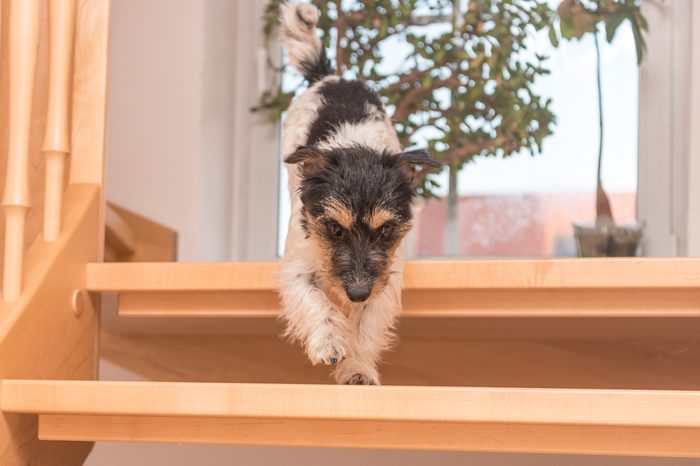Illness and Injury
Some medical conditions can cause dogs to become aggressive. If a dog that has never shown any sign of aggression suddenly begins growling, snapping, or biting, it may be caused by a disease or illness.
Pain is an especially common cause of aggression in dogs. Your suddenly aggressive dog may have an injury or an illness thats causing major discomfort and stress. Some possible causes of pain include arthritis, bone fractures, internal injuries, various tumors, and lacerations.
Other illnesses may affect your dogs brain, leading to seemingly unreasonable aggression. Conditions such as cognitive dysfunction and brain diseases or tumors may provoke the onset of aggression. These problems are more likely to occur in older dogs but can happen at any age.
If your dog is exhibiting sudden, unexplained aggression, talk to your veterinarian before attempting to address it as a behavior problem.
You may be tempted to try giving your dog medication to relieve pain, but this is something you should not do. If your dog is sick, youll need to know exactly what is wrong with it before you begin any treatment. Dont try to take matters into your own hands until you know what youre dealing with. Only a veterinarian can advise what medications are appropriate for your dog.
A fearful dog can easily develop aggressive behavior. Most dogs only exhibit aggressive behavior if they sense that they are in danger, cannot escape, and feel the need to defend themselves. For example, this may occur if a dog is backed into a corner with no way out, or if it thinks a hand raised over its head means it is going to get hit.
If your dog is a rescue dog that exhibits more aggressive or fearful behavior than is normal, it may have been abused, neglected, experienced a traumatic event, or not properly socialized as a puppy. Any information you can get from the organization where you adopted the dog could help you determine the best way to handle the situation.
Sometimes rescue dogs need obedience training with an instructor who specializes in teaching dogs that have been abused or those that have not been properly socialized. In some cases, you may be able to manage your dogs fear on your own with training and patience. You can speak to a veterinarian about the best course of action.
To avoid provoking this type of aggressive behavior, approach unknown dogs carefully (better yet, let them approach you). Train and socialize your dog to help prevent fear down the road.
Possession aggression, or resource guarding, occurs when a dog is possessive of something. This is often food, toys, or some other object of value. A dog that exhibits possession aggression may growl if someone approaches his food bowl or gets too close when he is chewing a favorite toy.
A dog may also bite or show aggression to a stranger who steps into your home or onto your property, which is the dogs territory. This is a common scenario with dogs who “hate the mail carrier” or bark violently at people just outside the property boundary or fence.
Resource guarding is also a common cause of aggression towards other household pets. Some dogs will growl, snap, or bite other animals in the home who approach the dogs food bowl, bed, or favorite toy.
The degree of aggression may vary from one dog to another and between objects. For instance, your dog might not care if you sit down and pet him while he chews a rubber toy, but he may turn and snap at you when you do the same thing while he chews a pigs ear. It all depends on the value that the dog attributes to each object or resource.
:max_bytes(150000):strip_icc()/dog-pulling-toy-from-man-s-hand-155133318-5c42004046e0fb000195cd86.jpg)
Why Do Dogs Show Aggression?
Knowing why your dog is acting aggressively is essential to figuring out the best plan for stopping this frightening behavior. First, however, it helps to know the signs of canine aggression, as few dogs bite without first showing escalating behaviors that indicate an attack is coming. A dog displaying aggression may:
Depending on the cause and intensity of the stimulus provoking the aggression, a dog might progress through all of these behaviors, or might just deliver a warning by growling, snarling, showing aggressive body postures, or exposing its teeth without progressing to an actual bite.
Most often, your dog will display aggression due to one of the following five reasons.
He won’t look you in the eye
If a person refused to meet their gaze and turned their back on you, you’d get the message that they were angry loud and clear. It’s the same with dogs, says Erin Askeland, CBCC-KA, CPDT-KA, dog training and behavior expert at Camp Bow Wow. “A dog who is happy and comfortable will likely be willing to make eye contact with his owner and seek out their attention whereas a dog who is angry or upset may avoid this type of interaction and move away from their owner, leave the room, or even sleep in a different area,” she says. How to fix this? Offer calm, quiet time together to help you and your dog relax, say reading a book or listening to soft music, she says. Don’t miss these superpowers dogs have that prove they’re cooler than humans.
